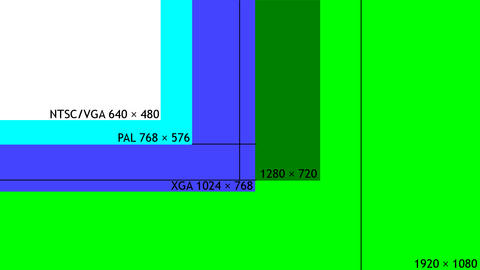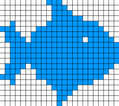HDTV
High-definition television (HDTV) means broadcast of television signals with a higher resolution than traditional formats (NTSC, SÉCAM, PAL) allow. more...
Except for early analog formats in Europe and Japan, HDTV is broadcast digitally, and therefore its introduction sometimes coincides with the introduction of digital television (DTV).
Historically, the term high-definition television was also used to refer to television standards developed in the 1930s to replace the early experimental systems, although, not so long afterwards, Philo T. Farnsworth, John Logie Baird and Vladimir Zworkin had each developed competing TV systems but resolution was not the issue that separated their substantially different technologies. It was patent interference lawsuits and deployment issues given the tumultuous financial climate of the late 20's and 30's. Most patents were expiring by the end of WW2 leaving the market wide open and no worldwide standard for television agreed upon. The world used analog PAL, NTSC, SECAM and other standards for over half a century.
The terms HD ready and HD compatible are being used around the industrial world for marketing purposes. They indicate that a TV or display is able to accept video over an HDMI connection, using a new connector design, the main purpose of which seems to be to ensure that digital video is only passed over an interface which, by agreement, incorporates copyright protection. Even HD-ready sets do not necessarily have enough pixels to display video to the 1080-line (1920x1080) or 720-line (1280x720) HD standards in full resolution without interpolation, and HD-compatible sets are often just standard-definition sets with an HDMI input. This is a confusing use of the terms HD and HDTV.
Notation
In the context of HDTV, the formats of the broadcasts are referred to using a notation describing:
- The number of lines in the display resolution.
- Progressive frames (p) or interlaced fields (i).
- Number of frames or fields per second.
For example, the format 720p60 is 1280 × 720 pixels, progressive encoding with 60 frames per second. The format 1080i50 is 1920 × 1080 pixels, interlaced encoding with 50 fields (25 frames) per second. Often the frame or field rate is left out. It can then usually be assumed to be either 50 or 60, except for 1080p which is only supported as 1080p24, 1080p25 or 1080p30 by current technology.
A frame or field rate can also be specified without a resolution. For example 24p means 24 progressive frames per second and 50i means 25 interlaced frames per second.
Most HDTV systems support some standard resolutions and frame or field rates. The most common are:
Standard resolutions

- NTSC is typically 720x480
Standard frame or field rates
- 24p (cinematic film)
- 25p
- 30p
- 50p
- 60p
- 50i (PAL)
- 60i (NTSC)
Read more at Wikipedia.org




